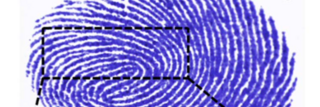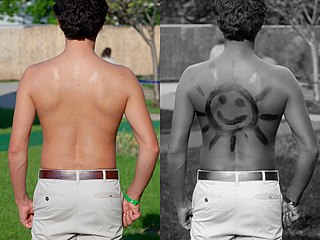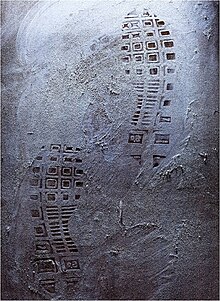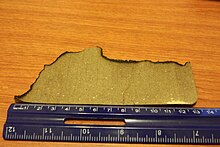
Photography is the art, application, and practice of creating images by recording light, either electronically by means of an image sensor, or chemically by means of a light-sensitive material such as photographic film. It is employed in many fields of science, manufacturing, and business, as well as its more direct uses for art, film and video production, recreational purposes, hobby, and mass communication. A person who captures or takes photographs is called a photographer.

Forensic science, also known as criminalistics, is the application of science principles and methods to support legal decision-making in matters of criminal and civil law.

Forensic engineering has been defined as "the investigation of failures—ranging from serviceability to catastrophic—which may lead to legal activity, including both civil and criminal". The forensic engineering field is very broad in terms of the many disciplines that it covers, investigations that use forensic engineering are case of environmental damages to structures, system failures of machines, explosions, electrical, fire point of origin, vehicle failures and many more.

In photography, shutter speed or exposure time is the length of time that the film or digital sensor inside the camera is exposed to light when taking a photograph. The amount of light that reaches the film or image sensor is proportional to the exposure time. 1⁄500 of a second will let half as much light in as 1⁄250.
Digital imaging or digital image acquisition is the creation of a digital representation of the visual characteristics of an object, such as a physical scene or the interior structure of an object. The term is often assumed to imply or include the processing, compression, storage, printing and display of such images. A key advantage of a digital image, versus an analog image such as a film photograph, is the ability to digitally propagate copies of the original subject indefinitely without any loss of image quality.

Underwater photography is the process of taking photographs while under water. It is usually done while scuba diving, but can be done while diving on surface supply, snorkeling, swimming, from a submersible or remotely operated underwater vehicle, or from automated cameras lowered from the surface.

Photogrammetry is the science and technology of obtaining reliable information about physical objects and the environment through the process of recording, measuring and interpreting photographic images and patterns of electromagnetic radiant imagery and other phenomena.

Macro photography is extreme close-up photography, usually of very small subjects and living organisms like insects, in which the size of the subject in the photograph is greater than life-size . By the original definition, a macro photograph is one in which the size of the subject on the negative or image sensor is life-size or greater. In some senses, however, it refers to a finished photograph of a subject that is greater than life-size.

A crime scene is any location that may be associated with a committed crime. Crime scenes contain physical evidence that is pertinent to a criminal investigation. This evidence is collected by crime scene investigators (CSI) and law enforcement. The location of a crime scene can be the place where the crime took place or can be any area that contains evidence from the crime itself. Scenes are not only limited to a location, but can be any person, place, or object associated with the criminal behaviours that occurred.

Trace evidence occurs when objects make contact, and material is transferred. This type of evidence is usually not visible to the naked eye and requires specific tools and techniques to be located and obtained. Due to this, trace evidence is often overlooked, and investigators must be trained to detect it. When it comes to an investigation trace evidence can come in many different forms and is found in a wide variety of cases. This evidence can link a victim to suspects and a victim or suspect to the crime scene.

Spirit photography is a type of photography whose primary goal is to capture images of ghosts and other spiritual entities, especially in ghost hunting. It dates back to the late 19th century. The end of the American Civil War and the mid-19th Century Spiritualism movement contributed greatly to the popularity of spirit photography. The omnipresence of death in the Victorian period created a desire for evidence of the afterlife, and those who partook in Spirit Photography oftentimes hoped to receive images that depicted the likeness of a deceased relative or loved one. Photographers such as William Mumler and William Hope ran thriving businesses taking photos of people with their supposed dead relatives. Both were shown to be frauds, but "true believers", such as Sir Arthur Conan Doyle, refused to accept the evidence as proof of a hoax.

Ultraviolet photography is a photographic process of recording images by using radiation from the ultraviolet (UV) spectrum only. Images taken with ultraviolet radiation serve a number of scientific, medical or artistic purposes. Images may reveal deterioration of art works or structures not apparent under light. Diagnostic medical images may be used to detect certain skin disorders or as evidence of injury. Some animals, particularly insects, use ultraviolet wavelengths for vision; ultraviolet photography can help investigate the markings of plants that attract insects, while invisible to the unaided human eye. Ultraviolet photography of archaeological sites may reveal artifacts or traffic patterns not otherwise visible.

Accident analysis is a process carried out in order to determine the cause or causes of an accident so as to prevent further accidents of a similar kind. It is part of accident investigation or incident investigation. These analyses may be performed by a range of experts, including forensic scientists, forensic engineers or health and safety advisers. Accident investigators, particularly those in the aircraft industry, are colloquially known as "tin-kickers". Health and safety and patient safety professionals prefer using the term "incident" in place of the term "accident". Its retrospective nature means that accident analysis is primarily an exercise of directed explanation; conducted using the theories or methods the analyst has to hand, which directs the way in which the events, aspects, or features of accident phenomena are highlighted and explained. These analyses are also invaluable in determining ways to prevent future incidents from occurring. They provide good insight by determining root causes, into what failures occurred that led to the incident.
The following outline is provided as an overview of and topical guide to forensic science:
Forensic science holds the branch of forensic photography which encompasses documenting both suspected and convicted criminals, and also the crime scenes, victims, and other evidence needed to make a conviction. Although photography was widely acknowledged as the most accurate way to depict and document people and objects, it was not until key developments in the late 19th century that it came to be widely accepted as a forensic means of identification.

Forensic footwear evidence can be used in legal proceedings to help prove that a shoe was at a crime scene. Footwear evidence is often the most abundant form of evidence at a crime scene and in some cases can prove to be as specific as a fingerprint. Initially investigators will look to identify the make and model of the shoe or trainer which made an impression. This can be done visually or by comparison with evidence in a database; both methods focus heavily on pattern recognition and brand or logo marks. Information about the footwear can be gained from the analysis of wear patterns which are dependent on angle of footfall and weight distribution. Detailed examination of footwear impressions can help to link a specific piece of footwear to a footwear imprint as each shoe will have unique characteristics.
Architectural photography is the subgenre of the photography discipline where the primary emphasis is made to capturing photographs of buildings and similar architectural structures that are both aesthetically pleasing and accurate in terms of representations of their subjects. Architectural photographers are usually skilled in the use of specialized techniques and cameras for producing such specialized photography.

Aerial photographic and satellite image interpretation, or just image interpretation when in context, is the act of examining photographic images, particularly airborne and spaceborne, to identify objects and judging their significance. This is commonly used in military aerial reconnaissance, using photographs taken from reconnaissance aircraft and reconnaissance satellites.

Photographic lighting refers to how a light source, artificial or natural, illuminates the scene or subject that is photographed; put simply, it is lighting in regards to photography. Photographers can manipulate the positioning and the quality of a light source to create visual effects, potentially changing aspects of the photograph such as clarity, tone and saturation to create an accurate rendition of the scene.
Contaminated evidence is any foreign material that is introduced to a crime scene after the crime is committed. Contaminated evidence can be brought in by witnesses, suspects, victims, emergency responders, fire fighters, police officers and investigators.


















